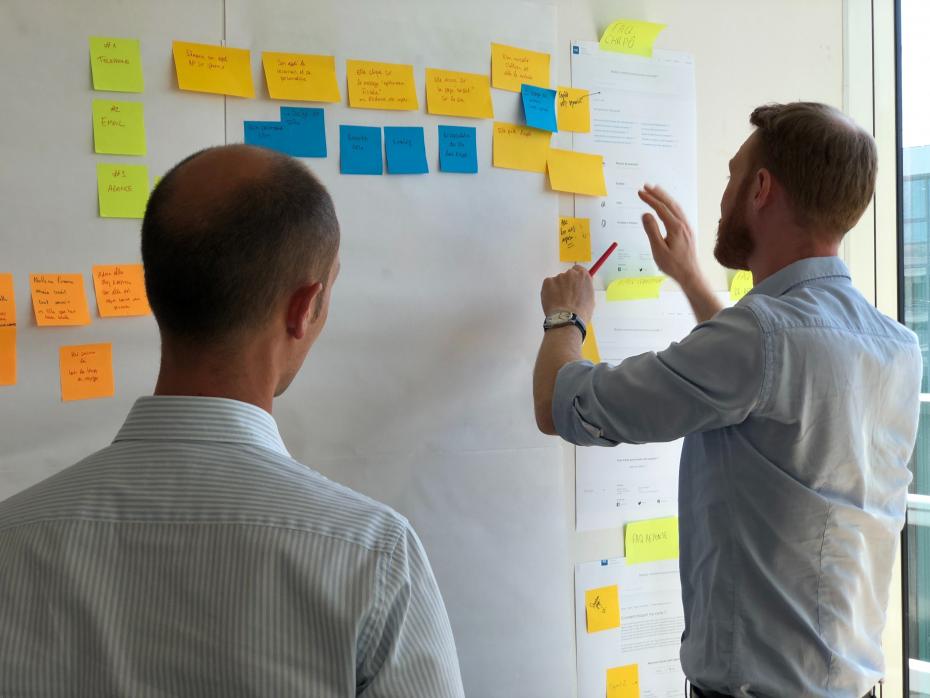The outgoing chair of the UK’s Office for Students, Sir Michael Barber, carried out a review of digital teaching at universities during the Covid-19 pandemic, which resulted in a series of recommendations for enhancing online delivery. The review was commissioned by the secretary of state for education. The recommendations are not regulatory guidance but instead provide a framework for quality technology-enhanced higher education.
Here we present his recommendations, broken down into their six core components, with resources offering practical advice and approaches to work towards the goal of effective digital teaching and learning.
The six core components are:
- Redesign pedagogy, curriculum and assessment
- Ensure digital access
- Build digital skills
- Harness technology effectively
- Embed inclusion
- Plan strategically
1. Recommendations to redesign pedagogy, curriculum and assessment
Design teaching and learning specifically for digital delivery using a “pedagogy-first” approach.
- Teaching and learning materials are designed for delivery in a digital environment.
- Pedagogy is placed at the centre of the design process, as opposed to this process being driven by technology.
Resources:
Sara Wolfson of the Open University offers four tips on how to design classes with a strong focus on interactive learning.
James Pickering at the University of Leeds outlines key pedagogical lessons to improve digital teaching design and delivery.
Co-design digital teaching and learning with students at every point in the design process.
- Students are involved in the design of digital teaching and learning and are regularly asked for feedback.
- Digital teaching and learning is regularly updated and revised in light of student input and feedback.
Resource:
Pat Tissington of the University of Warwick advises on using student feedback to continually experiment, test and refine your online instruction throughout the course.
Seize the opportunity to reconsider how assessments align with intended learning outcomes.
- Staff regularly reflect on how assessments are linked to intended learning outcomes. Where there is misalignment, this is addressed and assessments are redesigned.
- Senior leaders and teaching staff understand and use digital teaching and learning to create more “authentic” assessments that focus on the application of acquired knowledge and skills.
Resource:
Patrick Harte and Fawad Khaleel of Edinburgh Napier University advise on designing online assessment that promotes academic integrity.
2. Recommendations to ensure digital access
Proactively assess students’ digital access on an individual basis and develop personalised action plans to mitigate any issues identified.
- Staff work with all students facing digital access challenges on a one-to-one basis to develop personalised action plans that will mitigate digital access challenges and, where appropriate, identify any additional support needs. The plans are regularly reviewed.
- Students are informed about the digital equipment needed for the course well in advance of the start date, and this information is available to students at the time of choosing a course.
- Higher education providers take every step possible to ensure that no student is without access to digital teaching and learning because of digital access challenges.
Resource:
Angela Owusu-Ansah of Ashesi University talks about how to support remote students with limited access to technology.
Build learning and procure technology around the digital access actually available to students, not the access they would have in a perfect world.
- Teaching staff design digital teaching and learning materials with digital access challenges in mind.
- Digital teaching and learning is designed for students with lower bandwidths, and asynchronous alternatives are made available for students with limited or unreliable internet access.
Resource:
Otito Iwuchukwu of Fairleigh Dickinson University outlines how to take an equity-first approach to online course design and delivery to ensure all students can access the resources they need
3. Recommendations to build digital skills
Communicate clearly to students the digital skills they need for their course, ideally before their course starts.
- Students have a clear understanding of the digital skills they will need for their course and have access to the resources they need to develop them.
- Information about the digital skills students will need for their course is available in advance of the start date.
Resource:
Heidi Cheng of the Open University of Hong Kong offers tips for improving students’ digital know-how to learn online.
Create mechanisms that allow students to track their digital skills throughout their course and allow these skills to be recognised and showcased to employers.
- Students can track the digital skills they have developed throughout their course. This may be through digital passports or badges.
- Students are skilled in communicating the digital skills they have developed to employers.
Resource:
Jo Coldwell-Neilson of Deakin University advises on how to embed digital literacy training into all aspects of online higher education to boost students’ employability.
Support staff to develop digital skills by incentivising excellence and continuous improvement.
- Excellence in digital teaching and learning is championed, and those with particularly advanced knowledge and skills are given ways to share this across the organisation.
- Staff understand the digital skills they need and how their own abilities track against this (this may be through self-assessment).
- Staff are given regular opportunities to improve their digital skills and have a clear understanding of where to go to access training materials and resources.
Resource:
Gunter Saunders of the University of Westminster explains what institutions can do support and train staff in digital teaching delivery.
4. Recommendations to harness technology effectively
Streamline technology for digital teaching and learning, and use it consistently as far as possible.
- Students and staff can easily access all resources they need for digital teaching and learning, and the need to switch between tools and platforms is limited.
- Staff across departments have a consistent approach to using tools and platforms, and this leads to students having clear expectations about what they are expected to use and how to use it.
Resources:
Chris Cobb of the University of London shares his top tips for selecting and implementing new educational technologies.
Miral Gibson of Roehampton University offers pedagogy-led insight on tech tools that enhance online and blended learning.
Involve students and staff in decisions about the technology that will be used and how it will be implemented.
- Students, especially those with accessibility requirements, are leaders in the decision-making processes about the technology that will be used and how it will be implemented.
- Teaching staff who will be delivering digital teaching and learning are also leaders in these decision-making processes.
Resource:
Sean Morris of the University of Colorado Denver talks about how academics can foster digital skills in their students and themselves for better online learning outcomes.
Foster a culture of openness to change and encourage calculated risk-taking.
- An agile approach is taken to the procurement of technology, with tools and platforms reviewed regularly to assess whether they are fit for purpose and whether any new approaches might need to be adopted.
- Senior management teams (or those they rely on for advice) have a strong understanding of the tools and technologies available and the purposes they serve.
Resource:
Roland Sherwood of Xi’an Jiaotong – Liverpool University tells his colleague Tamara Kaup why and how to foster collaboration between faculty and educational technologists.
5. Recommendations to embed inclusion
Review and evaluate whether provision is inclusive and accessible.
- Students, in particular those from under-represented groups, are able to give feedback on how inclusive and accessible their learning environment is.
- Staff should feel equipped to use student feedback and other information to establish how inclusive the learning and teaching environment is, and should feel empowered and enabled to make improvements.
Resource:
Amy Low from AbilityNet shares advice on designing remote courses with accessibility and inclusivity in mind.
Design inclusively, build a sense of belonging and complement this with tailored support for individual students.
- Inclusive design is seen as the default for all digital teaching and learning.
- Staff have the confidence and skills to embed inclusivity into the learning environment.
- Individual students are given timely and tailored support where appropriate.
- The needs and experiences of particular groups of students, particularly those from under-represented backgrounds, are considered.
Resource:
Maha Bali of the American University in Cairo offers practical advice on building equitable learning communities online no matter students’ bandwidth or synchronicity of the class
Adapt safeguarding practices for the digital environment.
- Effective safeguarding practices are in place and promoted, to tackle online abuse including harassment, racial hate and sexual misconduct.
Resource:
Sam Smidt and Joanna Stroud provide steps lecturers can take to ensure a safe and respectful online learning environment through good ‘netiquette’.
6. Recommendations to plan strategically
Ensure a strong student voice informs every aspect of strategic planning.
- Student voice and representation is embedded into all strategic decisions concerning digital teaching and learning. This should also be true of strategic planning processes in all areas.
Resource:
David Woolley of Nottingham Trent University on empowering students to give them a rewarding university experience.
Embed a commitment to high-quality digital teaching and learning in every part of the organisation.
- A commitment to high-quality digital teaching and learning is embedded in every part of the organisation, and success in digital teaching and learning is seen as part of overall success.
- Senior management teams have a strong understanding of what high-quality digital teaching and learning looks like and what it takes to design and deliver this.
Resource:
Phil Collins of Brunel University London on keeping staff engaged to drive long-term sustainable change within institutions.
Proactively reflect on the approach to the digital and physical campuses.
- The importance of the digital campus is understood by senior management teams.
- The balance of investment between the digital and physical campuses is actively considered and aligns with the long-term strategic direction of the organisation.
Resource:
Steven Goss and Amy Greenstein of Manhattan College and the Metropolitan College of New York, respectively, explain how digital technologies can be used to enhance student support services long after the pandemic.
For more detailed information on Sir Michael Barber’s findings, you can access the full report here. And see our THE Campus collection of advice and insight designed to help universities and faculty meet these recommendations here.




comment1
(No subject)